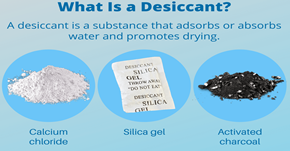

22nd July 2023 (7 Topics)
Context
Recently, a Bengaluru-based deep-tech start-up has found a technique to harvest water from air entirely powered by renewable energy.
What is this new Product?
- The product is based on ‘desiccants’.
- This contains a salt solution of calcium chloride. It allowed to scale up production to 20-30 litres of water per day.
- The product is significant to reimagine the water infrastructure by reducing dependence on conventional water sources such as groundwater.
|
As per the observations, for coastal areas like Chennai and Calicut, where the relative humidity is usually 80-90 per cent on average, optimum water production can be done at lower energy. |
How water extraction can be done from air?
- Conventional technologies that harvest water from the air are roughly based on an air conditioning device.
- Basically, the air conditioner cools the air by condensing the moisture present in the atmosphere and then forms water.
- But the new technology is power-hungry and is highly dependent on the relative humidity of the place.
‘Science’ behind the Technique:
- Desiccants are materials that attract and absorb moisture from the surrounding air. The common example of a desiccant is silica gel.
- It can absorb moisture from the air when exposed.
- And heating this material to about 70-80°C releases the moisture in an almost steam-like form, which can be condensed to form fresh water.

How does the equipment make drinkable water?
- First, when air enters the unit, the absorber air filters remove some dust particles.
- Second, the liquid desiccant has an affinity only for water vapor and no other pollutants.
- Third, microbial life dies when the material is heated to over 70°C. The water becomes pure and distilled, with no minerals, heavy metals, or microbial life.
- To make it drinkable, the water is passed through an ultrafiltration membrane.
- The ultrafiltration stage removes any particles that might have entered after the water gets collected; no water gets wasted at this stage.
- At last, it is passed through an ultraviolet disinfection chamber to add an extra layer of safety and minerals (minerals are primarily added in the form of a powder).



